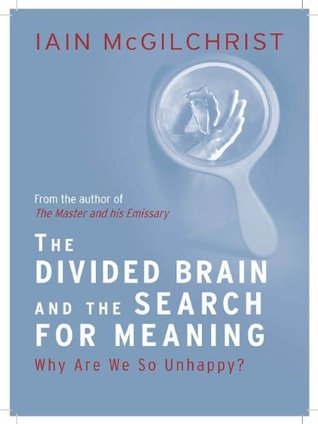More on this book
Community
Kindle Notes & Highlights
Because if instead we had seen it as part of a person, we would immediately have noticed that we were asking the wrong question. Instead of asking, as of a machine, what it does – does it ‘do’ reason, emotion, language, imagery? – we should have asked – as of a person – what's he or she like? How, in other words – with what values, goals, interests, in what manner and in what way – did it do what it did. If we ask this question – what sort of a way of engaging with the world, each hemisphere has, and thus what sort of a world each hemisphere engages with – we find a pervasive pattern, giving
...more
What are the key distinctions? One way of looking at the difference would be to say that while the left hemisphere's raison d'être is to narrow things down to a certainty, the right hemisphere's is to open them up into possibility.
I sometimes think of the right hemisphere as what enables Schrödinger's cat to remain on reprieve, and the left hemisphere as what makes it either alive or dead when you open the box. It collapses the infinite web of interconnected possibilities into a point-like certainty for the purposes of our interaction with the world.
Another way of thinking of the difference between the hemispheres is to see the left hemisphere's world as tending towards fixity, whereas that of the right tends towards flow.


